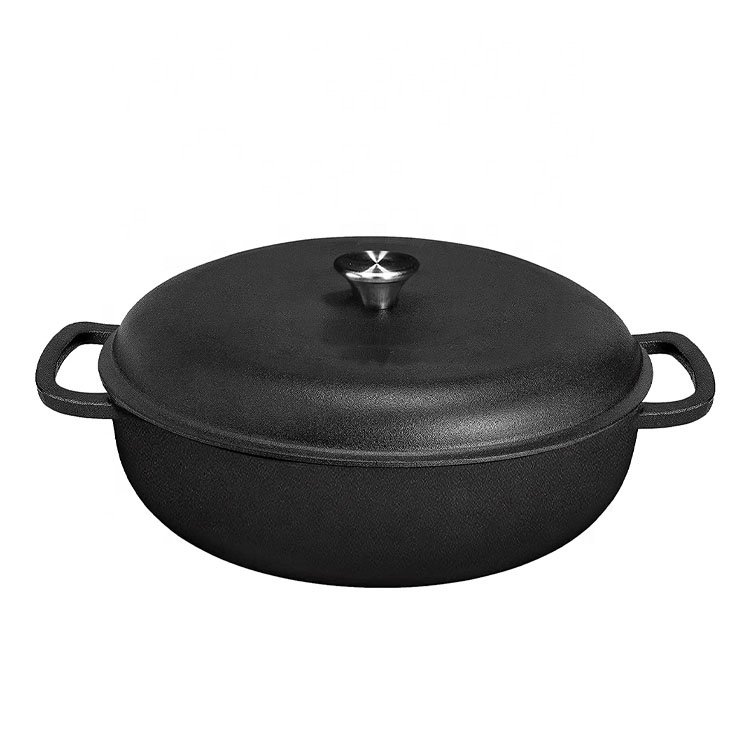
Affordable Cast Iron Compared to High-End Options Which is Worth the Investment?
Cheap Cast Iron vs. Expensive Cast Iron Understanding the Differences
When it comes to cookware, cast iron is highly revered for its durability, heat retention, and ability to develop a natural non-stick surface. However, consumers often face a dilemma should they opt for cheap cast iron cookware or invest in more expensive brands? This article explores the differences between cheap and expensive cast iron, helping you make a more informed decision based on your cooking needs and budget.
1. Material Quality
One of the most significant differences between cheap and expensive cast iron cookware is the quality of the material used. Expensive brands typically use high-grade cast iron, which is often smoother and more consistent in thickness. This quality allows for better heat distribution and retention. On the other hand, cheaper brands may employ inferior materials that can lead to hot spots, uneven heating, and in some cases, even warping. Over time, low-quality cast iron can degrade, leading to possible flaking or chipping, which is a serious concern for health and safety.
2. Construction and Design
Expensive cast iron cookware often features a design that has been refined over generations. The craftsmanship involved usually means better attention to detail, such as smooth edges, well-designed handles, and a thoughtful balance that makes it easier to lift and maneuver while cooking. Cheap cast iron cookware may have rough edges and poorly designed handles, making it uncomfortable to use. A cook who frequently uses these items may find that the little details matter—especially during longer cooking sessions.
3. Pre-seasoning vs. Unseasoned
Another important distinction lies in the pre-seasoning. High-end cast iron cookware is typically pre-seasoned with a layer of oil that provides a natural non-stick surface and protects the cookware from rust. This layer helps to minimize the need for initial seasoning and reduces the time it takes to start cooking right out of the box. Conversely, many cheaper brands either lack seasoning or utilize a lower-quality seasoning process, which can result in a less effective non-stick surface and the need for more maintenance.
cheap cast iron vs expensive

4. Longevity
Investing in expensive cast iron means investing in a cookware set that can last for decades—if not generations. In fact, many premium brands offer a lifetime warranty, illustrating their confidence in their product’s durability. Cheap cast iron, however, may break down much quicker, particularly with rigorous use and improper care. A low-cost option might seem appealing at first; however, over time, the need to replace the cookware can lead to higher expenses and waste.
5. Heat Retention and Cooking Performance
Cast iron cookware is known for its excellent heat retention, but this characteristic can be compromised in inexpensive options. Higher-end cast iron pieces maintain consistent temperatures, which is crucial for recipes that require a stable heat source. In contrast, lower-quality options may struggle to retain heat, making it challenging to achieve the desired cooking results. For avid cooks, the performance differences can be significant, as they affect not only cooking times but also the final taste and texture of the dish.
6. Aesthetic and Brand Heritage
Lastly, there is an aesthetic aspect to consider. Many expensive cast iron brands feature beautiful enamel finishes and iconic designs that not only look good in the kitchen but also make a statement about craftsmanship and quality. Cheaper brands may lack the same level of aesthetic appeal and variety. Additionally, many premium brands have a rich heritage and storytelling that can add a personal touch to the cooking experience.
Conclusion
While cheap cast iron cookware might fit a tight budget, the investment in expensive brands usually pays off in terms of durability, cooking performance, and overall user experience. For those who enjoy cooking and seek quality, opting for high-quality cast iron is generally the more prudent choice. In the kitchen, where every detail matters, the difference between cheap and expensive cast iron could mean the difference between a good meal and a great one.
-
Season Cast Iron Perfectly with GPT-4 Turbo TipsNewsAug.01,2025
-
High Quality Cast Iron Cookware - Baixiang County Zhongda MachineryNewsAug.01,2025
-
Premium Cast Iron Pan: Durable & Perfect HeatNewsAug.01,2025
-
High Quality Kitchen Durable Black Round Cast Iron Cookware Pancake Crepe Pan-Baixiang County Zhongda Machinery Manufacturing Co., Ltd.NewsAug.01,2025
-
Cast Iron Cookware - Baixiang County Zhongda Machinery | Nonstick, Heat ResistanceNewsAug.01,2025
-
High Quality Kitchen Durable Black Round Cast Iron Cookware - Baixiang County Zhongda Machinery | Non-Stick, Heat Retention, DurableNewsJul.31,2025


